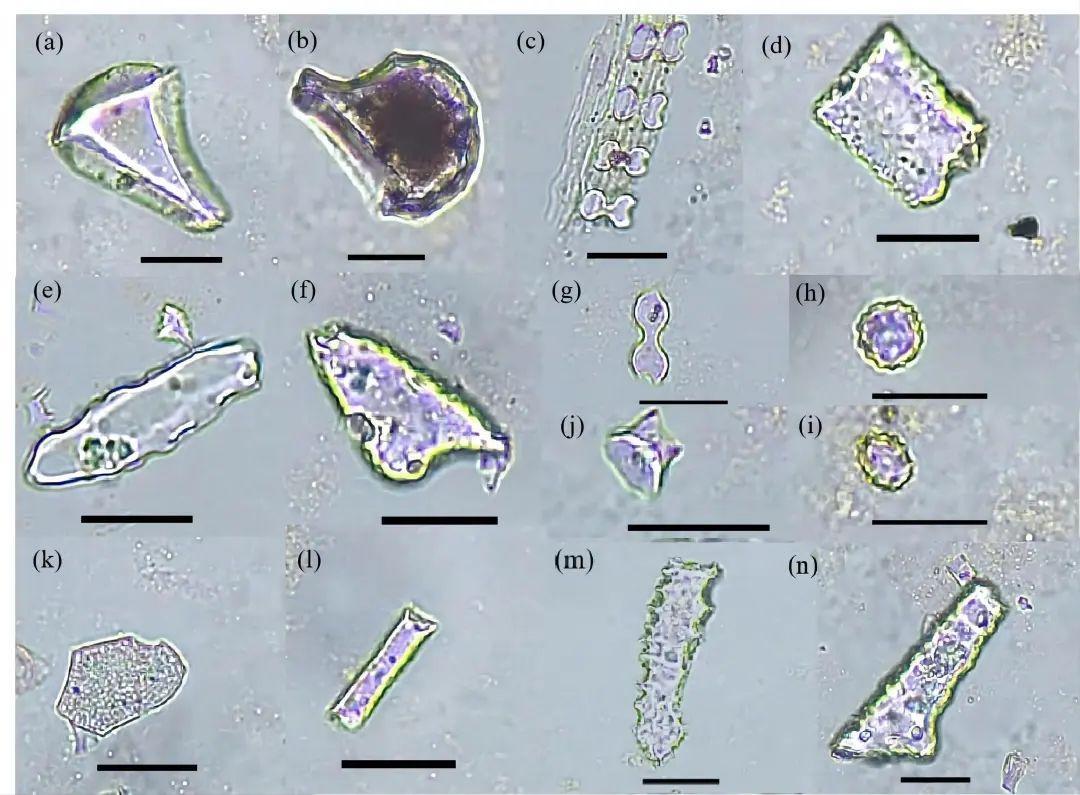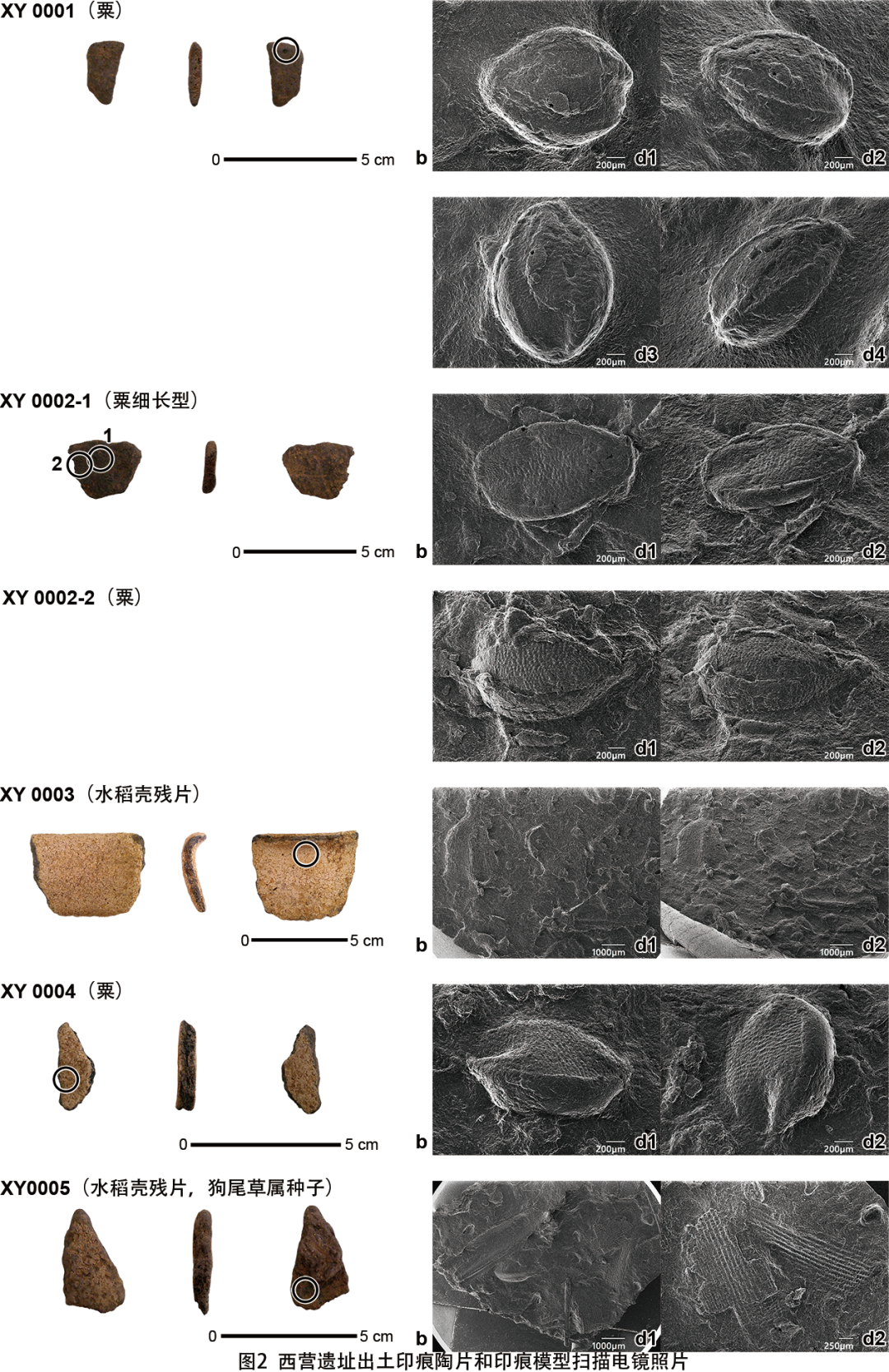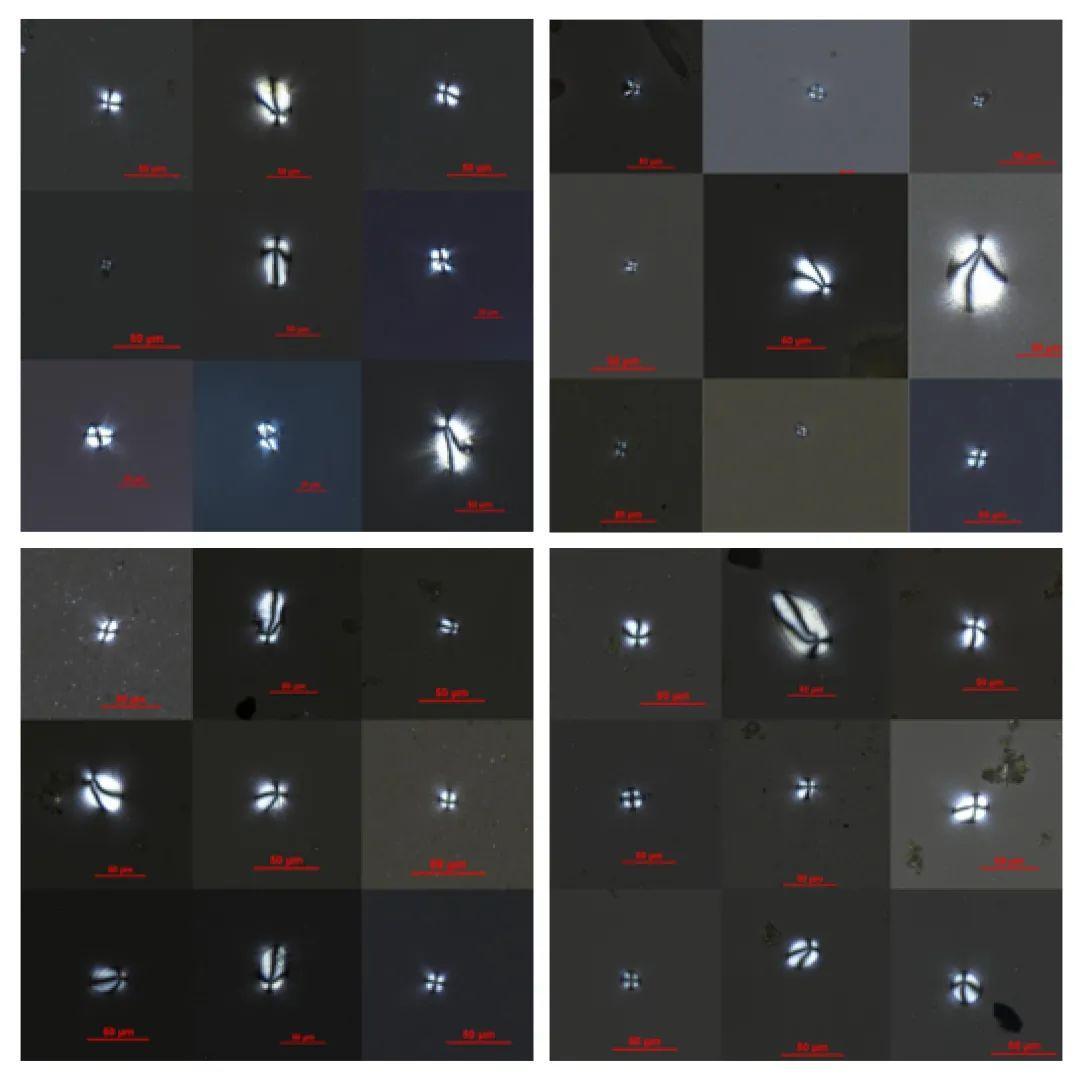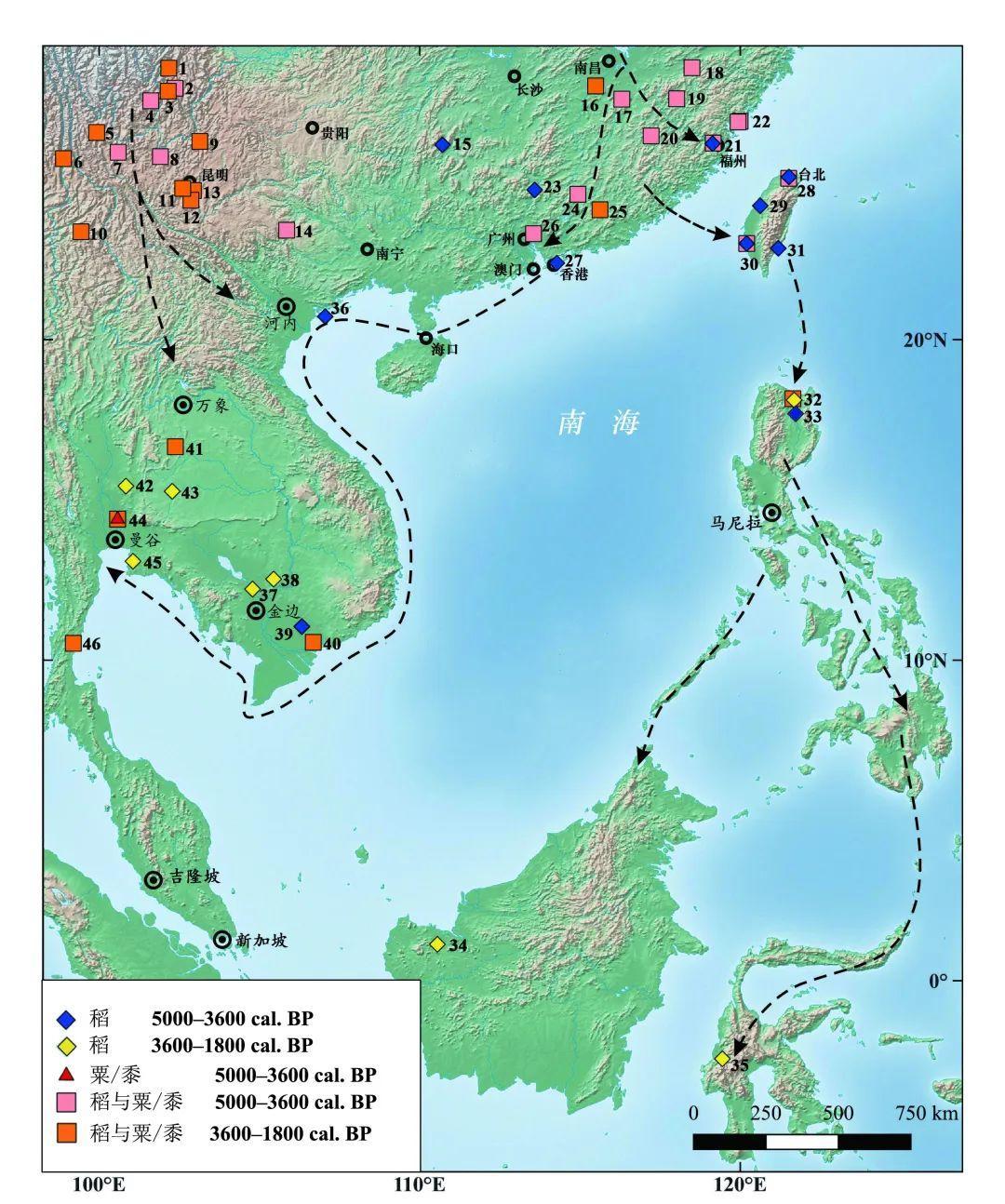Rice Residues: Decoding the secrets of prehistoric meat and plant-based diets
Updated:2025-05-14 | Lin Dan
Fig.1 Phytoliths from the Keqiutou Site

Fig.2 Traces of agricultural plants on Xiying Site pottery shards
 Fig. 3 Starch grains from the residues of Donghuaqiu and Guishan Sites
Fig. 3 Starch grains from the residues of Donghuaqiu and Guishan Sites

Fig. 4: Tracing early Austronesian migrations through the spread of agriculture
Origin: Pingtan Keqiutou Site, Xiying Site
Dating: Neolithic Age
Age: Approximately 7000 years
Phytoliths from rice remains discovered at the Xiying and Keqiutou sites date back over 7,000 years (Fig. 1). Plant impressions in pottery shards also reveal traces of rice, millet, and corn (Fig. 2). The earliest rice remains found on the islands along China's southeastern coast. Residue analysis has also uncovered starch grains from crops such as rice, corn, millet, and legumes (Fig. 3), revealing the agricultural practices of prehistoric island communities across different periods.
Archaeobotanical research has revealed that rice and foxtail millet were introduced to the Taiwan region between 4800 and 4600 years ago (Fig. 4), providing new conclusive evidence for the early dispersal of Austronesian-speaking populations.
"The agricultural crop remains discovered at the Keqiutou Site provide crucial evidence for advancing scholarly discussions on Austronesian migration and how rice farming expanded southward," explained Professor Zhang Wenjie, Vice Dean of the School of History and Cultural Heritage at Xiamen University."Moreover, they reveal that ancient communities had incorporated a balance meat and plant-based diet."

